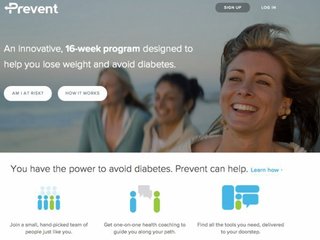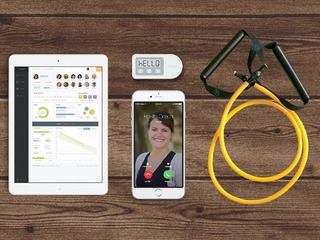How does Course Hero make money?
The company offers a freemium model, where users can pay to access more content and ask questions
Read more...
One of the more heartening shifts in healthcare that I've noticed in recent years has been toward preventative care. That means getting out ahead of problems, such as diabetes and heart disease, before they become full blown illnesses. That saves money and it saves lives.
Omada Health is a company that seeks to help prevent these types of disease by helping patients change their behavior and patterns using insights about social networking, gaming, and behavioral science.
Its flagship program, Prevent, is modeled around the National Institutes of Health study called the Diabetes Prevention Program and is designed to help participants modify their behavior and reduce their risk of Type 2 diabetes.
The company has contracts with organizations, who identify which of their employers are at the tipping point stage, where they are at risk of diabetes or heart disease, and then moves them into an intensive behavior counseling program.
Users are paired up with a health coach who guides them through different lifestyle changes. They also get weekly activities on nutrition and exercise that they can complete from a mobile device. Additionally, Omada mails participants a wireless scale that automatically tracks their weight online, along with a pedometer and a scale.
The company's business model is unique, as it doesn't just charge employers per customer, but it actually depends on the success of each individual to make money. Omada's revenue is outcome based.
The digital scale that each user gets, which is connected wirelessly to their Omada account, does daily weigh-ins to track their weight loss, as that is a good indicator of blood sugar and the risk of diabetes. Omada then gets paid based on the percentage weight loss that user has seen.
So, if the user has lost 2 percent of their weight, Omada charges 2x its fee; if they have lost 4 percent, then the company charges 4x, and so on. So, if the base charge is $10, for example, and the patient has lost 2 percent of their body weight, Omada would make $20.
The fee is set against the user's baseline, or whatever weight they were when they started. If a user loses 5 percent of their weight, and continues to maintain that, Omada still get 5x its fee.
The ROI for employers is clear: someone with Type 2 Diabetes typically costs at least $10,000 a year, but just a 5 percent weight loss reduces the risk of getting the disease by 70 percent. That weight loss can save an employer potentially thousands of dollars.
The initial curriculum is four months long, and each employer signs a year long contract, but the company is finding that they increasing being left open ended to help employees maintain their healthy lifestyle.
Founded in 2011, Omada Health has raised $77.5 million in venture funding, most recently a $48 million round in September 2015.
Investors in the company include Norwest Venture Partners, Humana Inc., Providence Health & Services, US Venture Partners, Rock Health, Andreessen Horowitz, GE Ventures and dRx Capital.
Thanks to Splash Health 2017 sponsors: Advsr, AARP, Avison Young, Bread and Butter Wine, Surf Air, Stratpoint and Scrubbed.
(Image source: go.omadahealth.com)
The company offers a freemium model, where users can pay to access more content and ask questions
Read more...The company sells a premium version of its free product to parents, schools and districts
Read more...Initially a platform for renting textbooks, it now makes 90% of revenue from software subscriptiions
Read more...


